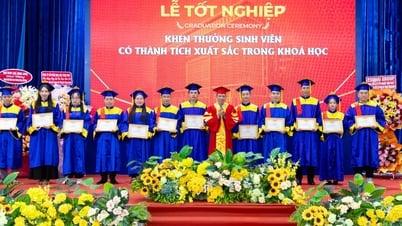
1. Which city has the largest area in the country after the merger?
- A
- B
HCMC
- C
- D
According to Resolution 60 at the 11th meeting of the 13th Party Central Committee, the policy on the number of provincial-level administrative units after the merger is 34 provinces and cities (28 provinces and 6 centrally-run cities).
6 centrally-governed cities include: Hanoi, Hue, Hai Phong (merged with Hai Duong), Da Nang (merged with Quang Nam), Ho Chi Minh City (merged with Ba Ria - Vung Tau, Binh Duong), Can Tho (merged with Soc Trang and Hau Giang).
Before the merger, Da Nang had an area of 1,284.88 km², Quang Nam had an area of 10,406 km². After the merger, Da Nang's total area is more than 11,000 km², the largest in the country.

2. Which city has the smallest area in the country after the merger?
- A
Hanoi
- B
Can Tho
- C
Hai Phong
After the merger, Hai Phong (merged with Hai Duong) became the smallest centrally-governed city with an area of just over 3,100 km². Before the merger, Hai Phong had an area of about over 1,500 km², Hai Duong had an area of over 1,600 km².
- D
Hue

3. How many provinces and cities did not merge?
- A
10
- B
11
Resolution 60 at the 11th meeting of the 13th Party Central Committee agreed on the policy on the number of provincial-level administrative units, of which 11 provincial-level units (2 cities, 9 provinces) will not be merged, including: Hanoi, Hue, Lai Chau, Dien Bien, Son La, Lang Son, Quang Ninh, Thanh Hoa, Nghe An, Ha Tinh, Cao Bang provinces.
- C
12
- D
13

4. Which province does not carry out the merger even though the area does not meet the standards?
- A
Cao Bang
Cao Bang is a province with a natural area that does not meet the regulations (6,700.4 km2, only 83.8% of the standard) but does not implement the arrangement because it has a very long national border with China, complex mountainous terrain, and the neighboring provinces are not suitable for arrangement and merger.
- B
Lai Chau
- C
Dien Bien
- D
Son La

5. Which locality has the largest economic scale after the merger?
- A
Hanoi
- B
HCMC
After the merger, the role of "economic locomotive" of Ho Chi Minh City is even more evident when accounting for 1/4 of the gross domestic product (GDP), if adding the scale of Ba Ria - Vung Tau and Binh Duong. Accordingly, after the merger, the gross regional domestic product (GRDP) of Ho Chi Minh City leads the country when reaching 2,707,805 billion VND. Ho Chi Minh City previously accounted for 15.5% of GDP. After merging with Binh Duong and Ba Ria - Vung Tau, the influence is even greater when contributing nearly 24% to the whole country. Ho Chi Minh City's GRDP after the merger is nearly double that of the capital Hanoi. The city's economic scale is also double that of the 6 new localities in the Southwest region combined.
- C
Hai Phong
- D
Danang

Source: https://vtcnews.vn/thanh-pho-nao-dien-tich-lon-nhat-ca-nuoc-sau-sap-nhap-ar939000.html



![[Photo] Prime Minister Pham Minh Chinh chairs meeting on science and technology development](https://vphoto.vietnam.vn/thumb/1200x675/vietnam/resource/IMAGE/2025/5/17/ae80dd74c384439789b12013c738a045)
![[Photo] More than 17,000 candidates participate in the 2025 SPT Competency Assessment Test of Hanoi National University of Education](https://vphoto.vietnam.vn/thumb/1200x675/vietnam/resource/IMAGE/2025/5/17/e538d9a1636c407cbb211b314e6303fd)
![[Photo] Readers line up to visit the photo exhibition and receive a special publication commemorating the 135th birthday of President Ho Chi Minh at Nhan Dan Newspaper](https://vphoto.vietnam.vn/thumb/1200x675/vietnam/resource/IMAGE/2025/5/17/85b3197fc6bd43e6a9ee4db15101005b)






















![[Photo] Nearly 3,000 students moved by stories about soldiers](https://vphoto.vietnam.vn/thumb/1200x675/vietnam/resource/IMAGE/2025/5/17/21da57c8241e42438b423eaa37215e0e)







































































Comment (0)